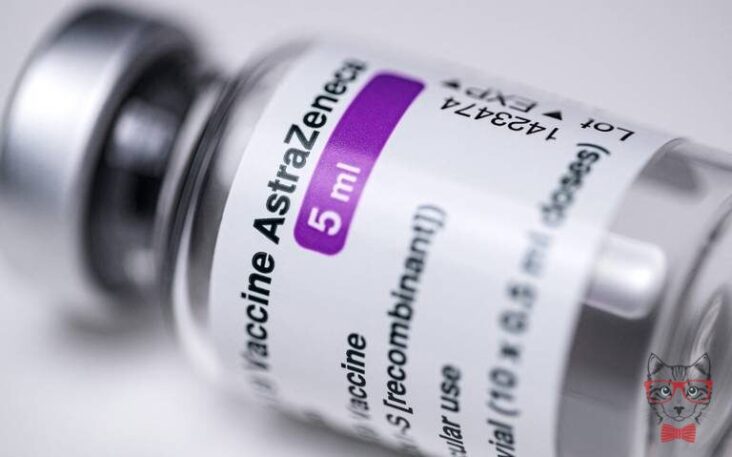The confirmation that the AstraZeneca vaccine can cause blood clots in some people, even though they are extremely rare cases, has multiplied doubts among the population about a drug supported by international health authorities and questioned in various countries.
These are some of the questions raised by a suspected coronavirus vaccine that has been speculated for weeks:

Who and where do they make it?
The covid-19 vaccines developed by the University of Oxford and the Anglo-Swedish pharmaceutical company AstraZeneca (the product of the 1999 merger of the Swedish laboratory Astra AB and the British Zeneca Group) come from twenty-five manufacturing plants located in fifteen different countries, among them which highlights the Serum Institute, in India.
On European territory, the active substance of this vaccine (now marketed under the name Vaxzevria) is manufactured in the Netherlands and Belgium, while packaging is carried out in Italy.
Of the 3,000 million doses that AstraZeneca plans to deliver worldwide before the end of this year, 300 million must correspond to the EU, according to the contract signed with the European Commission, which agreed to pay 870 million euros in exchange.
In that contract, the pharmaceutical company promised to make a “reasonable effort” to produce the vaccine in its European plants, including the one located in the United Kingdom, although it did not rule out manufacturing it in other parts of the world if it was convenient to speed up supply within the EU.
What type of vaccine is it and how does it work?
AstraZeneca’s is a “recombinant vaccine” or “viral vector”, created from a chimpanzee adenovirus: it contains a modified version of a virus other than SARS-CoV-2 (the vector) that accesses a cell of the body and produces a harmless portion of the coronavirus, known as the “Spike” or “S” protein.
By recognizing this “spike” protein as something foreign, the immune system begins to produce antibodies and other cells to fight what it considers an infection. In this way, the vaccine achieves its objective with a fragment of the virus that does not contain any type of genetic material, so it can never cause the disease it is trying to prevent.
Complete administration requires the inoculation of two doses, as occurs with the Pfizer and Moderna vaccines, but, unlike both, this preparation can be stored at temperatures above zero, between 2 and 8 degrees Celsius.
What countries use it so far?
Many states around the world were administering the AstraZeneca vaccine when doubts about its possible link to thromboembolic events led to temporary interruptions in vaccination in mid-March in some countries.
Up to thirteen EU states, including Germany, France, Italy and Spain, then paralyzed the administration of the drug, although they resumed it when the European Medicines Agency (EMA) endorsed its safety.
In America, a large part of the Latin American countries had bought millions of doses from the Anglo-Swedish pharmaceutical company and continued to administer them: Brazil, Mexico (President Andrés Manuel López Obrador confirmed that he would be vaccinated with this drug), Argentina, Dominican Republic, Costa Rica, Nicaragua , Guatemala, El Salvador …
On the other hand, Cuba did not close any purchase with AtraZeneca and Venezuela and Haiti have rejected the vaccine as a result of the controversy. Meanwhile, the US has yet to authorize its emergency use, but Washington has already reached agreements with Canada and Mexico to send them four million doses.
What ages are suitable to be vaccinated?
According to the therapeutic indications, it is recommended for all ages from 18 years old, but, in practice, each country has decided to which age groups it was administered according to its criteria. And, in many cases, that criterion has changed one or more times.
Within Europe, national vaccination strategies show a wide range of ranges between the countries that inoculate the preparation from 18 years of age without distinction of age (Portugal, Belgium, Austria, the Czech Republic) and those that still maintain its administration to the entire population (Denmark, Norway).
Germany, for example, paralyzed vaccination of those under 60 years of age after initially opting not to administer it to those over 65 and then interrupting its use for a few weeks, while Spain administered it until this Wednesday to people between 56 and 65 years, but also older or younger than those ages to complete the immunization of groups with essential activities.

However, this Wednesday, in light of the EMA’s conclusions on the relationship between the AstraZeneca vaccine and some cases of thrombosis, Spain has stopped vaccination with this drug for those under 60 years of age.
In the United Kingdom so far those over 50 years of age receive this vaccine, in Italy those over 65 (but from 80 years of age preference is given to Pfizer’s), in France those over 55, in the Netherlands those over 65 between 65 and 74 years, in Poland those under 60, in Sweden and Finland those over 65, in Iceland from 70 years …
What side effects have been described?
The most common side effects of this vaccine during the trials were generally mild or moderate: pain and tenderness at the injection site, headaches, tiredness, muscle aches, general feeling of malaise, chills, fever, joint pain, and sickness. They affected more than one in 10 people and improved days later.
At most one in 10 vaccinated people may notice redness or swelling in the puncture area, have a fever above 38 degrees, or suffer vomiting or diarrhea, according to the AstraZeneca documentation approved by the EMA, which mentions as rare effects (one of each 100 people or less) dizziness, decreased appetite, abdominal pain, sweating, and rashes.
The user information provided by AstraZeneca further advises vaccinates to seek urgent medical attention if they experience a severe allergic reaction combining any of the following symptoms: weakness or slight dizziness, changes in heart rate, difficulty breathing or wheezing when doing so, swelling of the lips, face or throat, hives, stomach pain, nausea or vomiting.
What is the relationship between vaccine and thrombi?
The European Medicines Agency confirmed this Wednesday that the appearance of thrombi combined with low levels of platelets should be included in the list of adverse effects of the AstraZeneca vaccine as a possible “very rare” side effect, without being able to determine so far a specific risk factor that affects some vaccinated more than others.
In its conclusions, the EMA safety committee (PRAC) indicates that the “plausible explanation” for the less than eighty “unusual” cases of thrombi found in people who had been immunized with this drug is that “they are an immune response to the vaccine”.
However, the experts of the European agency have not been able to identify for these adverse effects a risk factor that makes any group of vaccinated more vulnerable (age, sex, a previous medical history …).
Despite this “possible link” with cases of thromboembolism, the EMA wanted to make it clear that the benefits of this vaccine to prevent covid-19 continue to outweigh any risk of side effects.
In fact, with the available data, the number of affected by these cases is 0.0003% of the total of those vaccinated with the AstraZeneca drug, a much lower proportion than that of the group of thromboembolisms in the general population and also the risk that represent contraceptives or anti-inflammatories.
What do these thrombi consist of?
There have been 86 cases – 18 resulting in death – that have led the EMA safety committee to draw these conclusions about its relationship with the AstraZeneca vaccine: in 62 of them vaccinated people suffered cerebral venous sinus thrombosis (CVST , for its acronym in English) and the other 24 were splanchnic vein thrombosis (SVT).
CVST is a rare cerebrovascular disease. It consists of the formation of clots in the venous system of the brain that hinder or prevent blood circulation and its most common symptom is headache.
VTE is also considered rare, although it is often only detected accidentally. In this case, thrombi occur in one of the veins that run through the abdomen and the symptom that may reveal their existence is abdominal pain, accompanied or not by nausea or vomiting.
Most of the investigated cases occurred in women under 60 years of age during the 15 days after vaccination, according to the EMA, which recommends patients to go to the doctor urgently if they notice symptoms such as chest pain, breathing difficulties, swelling in one leg, blood spots under the skin, abdominal pain, blurred vision, or headaches.


.jpg)


GIPHY App Key not set. Please check settings